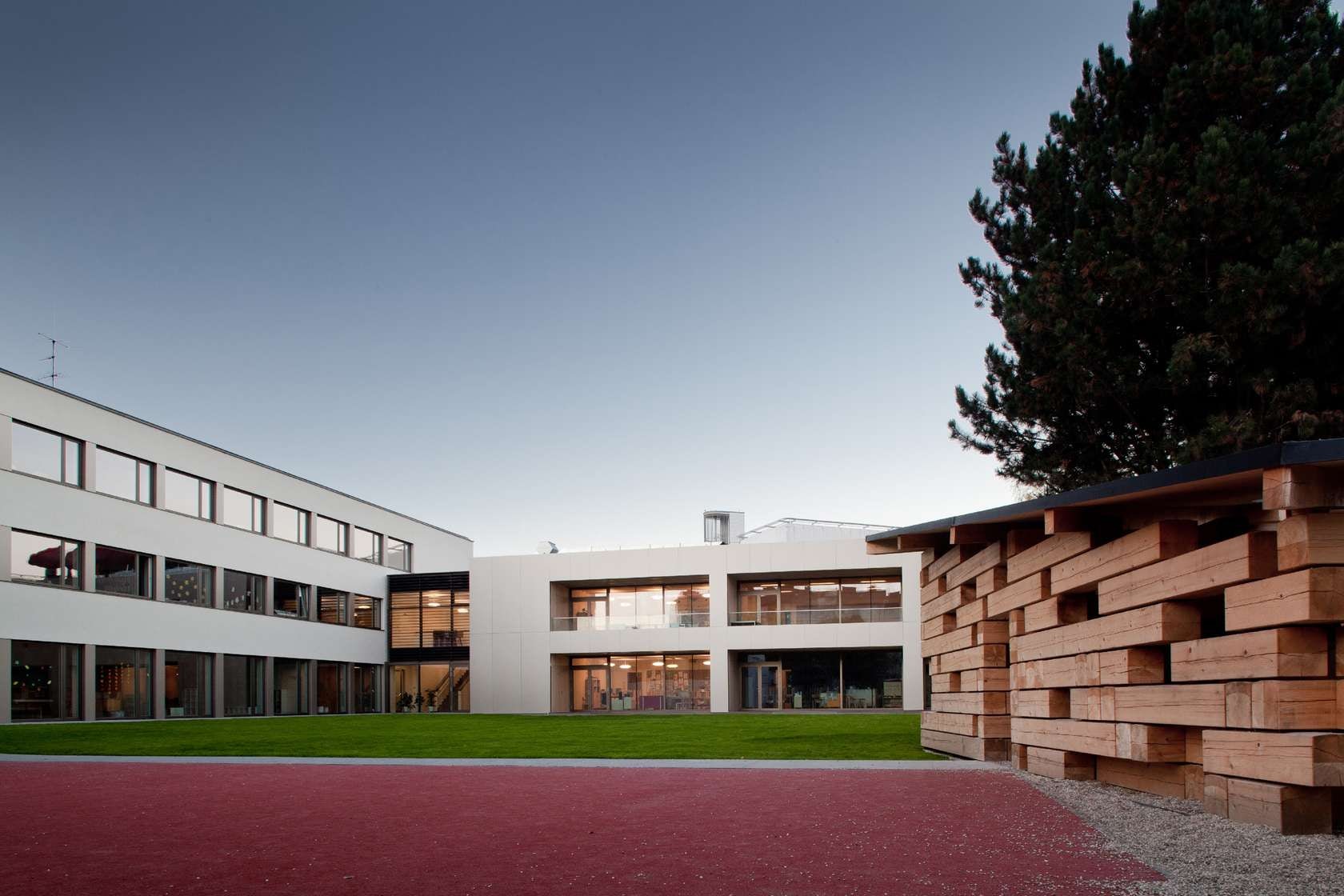Architecture dramatically affects how we learn. In the last 20 years we have made serious advancements in understanding the impact of physical environments on development, memory, and retention. The importance of light quality, acoustics, materials, and spatial organization shows that great design can make a real difference.
Austria, known for dramatic buildings like Zaha Hadid’s Library and Learning Centre or Peter Cook’s Kunsthaus Graz, is at the forefront of pioneering design in this area. A country with a free public school system totaling nine years and low costs for tertiary education, Austria has invested both time and money in critically examining the role between space and cognitive development.
The following collection presents seven schools across Austria and the different means through which designers are exploring the relationship between architecture and learning. Each building showcases a thorough investigation into the spatial dynamics that empower teaching, creativity, and thought. Prepare to be well and truly educated!


Robinson School by Schneider & Lengauer Architekten, Linz, Austria
The Robinson School was conceived as a place to allow city kids as much access to nature and movement as possible. The design was created as a renovation and reconstruction of the existing experimental Primary School 49 in Linz. The school invites children to experience space in a variety of ways while empowering education through formal, programmatic, and spatial organization.

© GOYA

© GOYA
Kindergarten V Guntramsdorf by GOYA, Guntramsdorf, Austria
Guntramsdorf’s Kindergarten V is carefully positioned in a grove of chestnut trees. A series of open structures visually connect with the trees while housing the educational programs. The kindergarten was designed as a low-energy building with a groundwater heat pump, controlled ventilation, and under-floor piping.

© Daniel Fügenschuh Architekt ZT GmbH

© Daniel Fügenschuh Architekt ZT GmbH
Hauptschule Rattenberg by Daniel Fügenschuh Architekt ZT GmbH, Rattenberg, Austria
This school design in Rattenberg incorporated a former 14th-century monastery that occupied part of the site. The new construction was built while leaving the old building completely intact. The design also included the reparation of an environmentally unsustainable structure that had been built next to the monastery in the 1970s.

© SOLID architecture

© SOLID architecture
Kindergarten Neufeld an der Leitha by SOLID architecture, Burgenland, Austria
Housing a four-group kindergarten, the Neufeld an der Leitha was built as the winning proposal for an invited competition. Clearly defined outdoor spaces were created through an east-west building orientation, creating play areas largely undisturbed by traffic. The entire building also has a controlled ventilation system to help focus on a more economic use of resources.

© Architektur Strobl

© Architektur Strobl
Kinderkrippe Schönbrunngasse Graz by Architektur Strobl, Schönbrunngasse, Graz, Austria
The Kinderkrippe Schönbrunngasse Graz was designed as a three-building layout. Two structures are currently completed, including a nursery school and kindergarten. A spacious playground acts as a connective center between the three programmed areas.

© AllesWirdGut

© AllesWirdGut
BSE – Embelgasse Vocational Training School by AllesWirdGut, Embelgasse, Margareten, Wien, Austria
This vocational training school was designed to provide transparency between education programs and the everyday life of the street. A large glass enclosure surrounds the block, a volume characterized by openness and views through the form. A gridded pattern of glazing runs along the façade, allowing the upper floors further exposure to the public.

© Kleboth und Dollnig

© Kleboth und Dollnig
HTBLuVA Salzburg by kleboth lindinger dolling, Salzburg, Austria
The expansion of Austria’s second largest school was designed as an urban landmark. This innovative education building visually and physically links to the street through a newly demarcated public space. The design also includes outdoor spaces, a new color and lighting scheme, and a thermally optimized façade.




